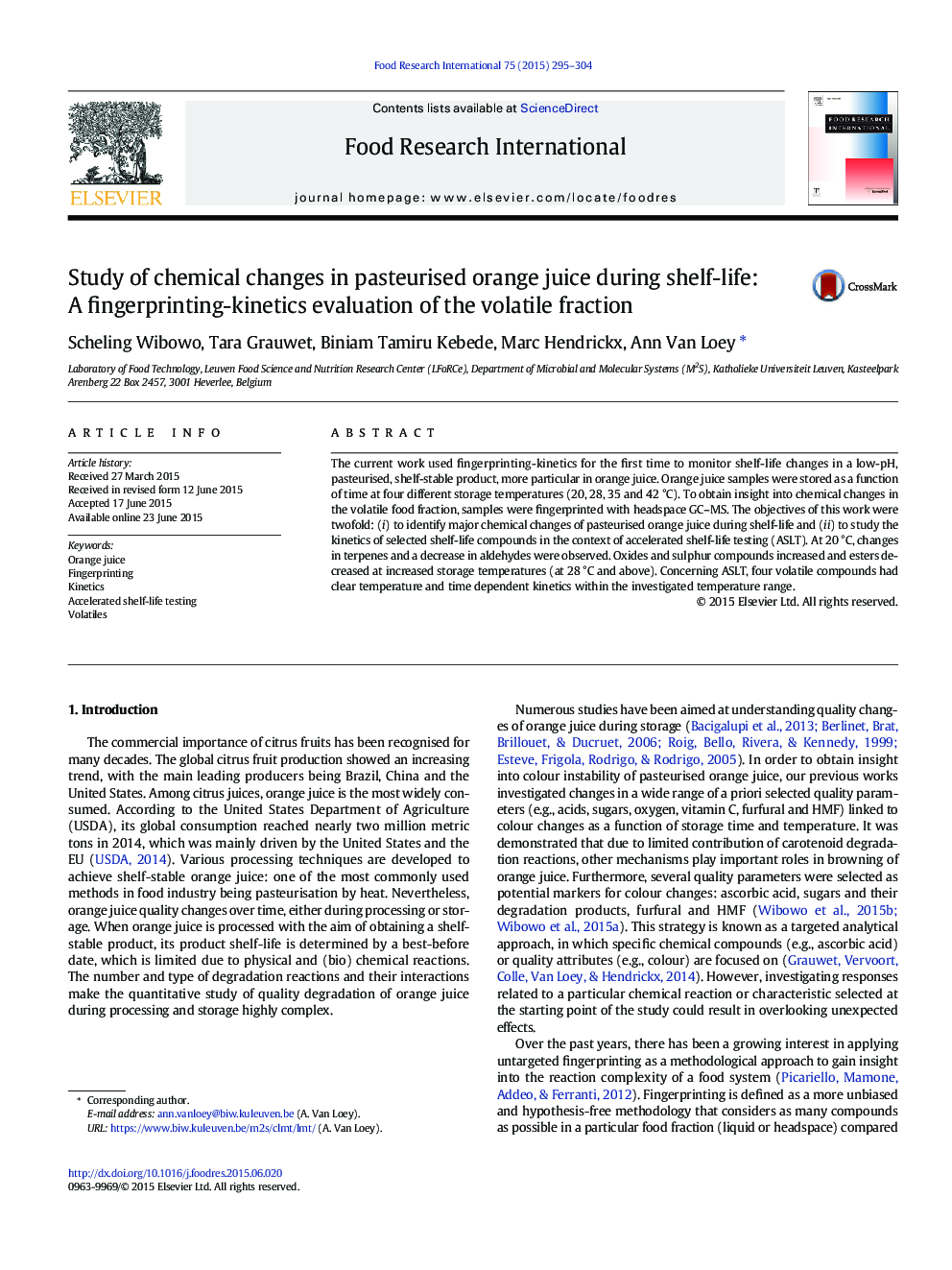| Article ID | Journal | Published Year | Pages | File Type |
|---|---|---|---|---|
| 6395383 | Food Research International | 2015 | 10 Pages |
â¢Change in the volatile fraction of orange juice was investigated during shelf-life.â¢Changes in terpenes, aldehydes, esters, sulphur compounds and oxides were clearly observed.â¢Four volatiles were selected as markers for accelerated shelf-life testing.â¢Acid-catalysed degradation and oxidative reactions could determine juice shelf-life.
The current work used fingerprinting-kinetics for the first time to monitor shelf-life changes in a low-pH, pasteurised, shelf-stable product, more particular in orange juice. Orange juice samples were stored as a function of time at four different storage temperatures (20, 28, 35 and 42 °C). To obtain insight into chemical changes in the volatile food fraction, samples were fingerprinted with headspace GC-MS. The objectives of this work were twofold: (i) to identify major chemical changes of pasteurised orange juice during shelf-life and (ii) to study the kinetics of selected shelf-life compounds in the context of accelerated shelf-life testing (ASLT). At 20 °C, changes in terpenes and a decrease in aldehydes were observed. Oxides and sulphur compounds increased and esters decreased at increased storage temperatures (at 28 °C and above). Concerning ASLT, four volatile compounds had clear temperature and time dependent kinetics within the investigated temperature range.
